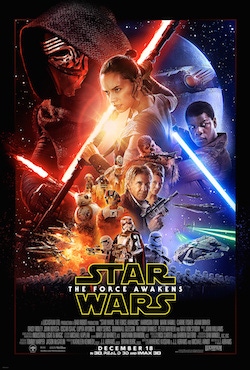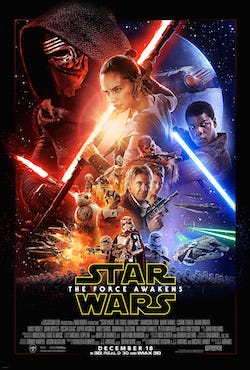The Buzz in Licensing
Ten licensing trends that need to be on your radar in 2016.
April 6, 2018

Ten trends that need to be on your radar in 2016.
© Copyright License! Global 2016
 One of the most important responsibilities of any executive is to understand the overall trends and dynamics of your business, which understandably is no easy task. And because licensing touches so many different industry sectors it’s that much more daunting a task. So consider the following 10 trends, which provide some perspective and insight, as a quick way to start your strategic planning for 2016 and beyond.
One of the most important responsibilities of any executive is to understand the overall trends and dynamics of your business, which understandably is no easy task. And because licensing touches so many different industry sectors it’s that much more daunting a task. So consider the following 10 trends, which provide some perspective and insight, as a quick way to start your strategic planning for 2016 and beyond.
Franchise Development. While it’s been a strategy among some entertainment licensors for several years, it now resonates across all types of brands and it’s being driven by the need to drive awareness 24/7. It’s about the ability to extend a brand into new categories, create different and unique co-branding and sponsorships, and hit more non-traditional consumer touch points than ever before.
Market Fragmentation. While the demise of the mass market has been warned for more than a decade, the “age of craft-tification” and niche brands are challenging the longstanding global brands for market share and shelf space as well as creating new opportunities for brand extensions. It’s far easier in today’s world of e-commerce for small- to mid-sized businesses to grow without the support of the major retail chains.
Entertainment Factor. Whether it’s a theme park or social media initiative, it’s all about fan engagement. And there have been numerous examples throughout 2015 and several more already this year. For example, CBS Consumer Products, Paramount Pictures and CineConcerts are launching a concert tour this week, called "Star Trek: The Ultimate Voyage," which will tour performing arts centers in more than 100 cities, and Nickelodeon partnered with Sanshui New Town and Elite Global Group for its first branded attraction in Foshan, China, which is scheduled to open in 2020.
Opportunities in China. With its box office revenue topping $6.7 billion last year and projected to surpass North America’s 2015 total of $11 billion by 2017, the entertainment sector in China is poised for strong growth and that bodes well for licensing, as well. In addition, the recently announced acquisition of Legendary Entertainment by Chinese conglomerate Dalian Wanda Group, further shows the importance of entertainment. Furthermore, according to the latest BrandZ research report, "The Top 100 Most Valuable Chinese Brands," brand value increased 22 percent in 2015, reflecting the growing importance of its brands both domestically and worldwide and the continued potential for brand extensions.
Virtual Reality. A joint research study conducted by the Consumer Technology Association and NATPE that was released last week at CES, revealed that the Hollywood studios are “passionate about the new medium and believe it is “a game changer.” The respondents reported that there are “understandable hurdles that still need to be addressed, including generating a sustainable model for content creation, establishing a clear pathway to monetization and determining the endurance cap for sustained viewing that will affect long-form storytelling.”
Mobile Commerce. According to a recent study conducted by Shop.org and Forrester Research, smartphones were identified for the first time as the No. 1 driver of sales and traffic for retail companies. Retailers surveyed reported that smartphone sales accounted for 17 percent of their total online sales in 2015 versus 14 percent generated by tablets and that sales from smartphone devices grew 53 percent over the previous year, while sales from tablet devices grew 32 percent. This is yet another example of not only how e-commerce sales are quickly eclipsing traditional brick-and-mortar, but also the opportunities that exist for brand licensors.
Star Wars Mania. The headlines throughout 2015 and especially during the fourth quarter were all about Star Wars from every conceivable angle. With box office sales already topping $1.5 billion and passing the record set by Jurassic World, and the film just hit theaters in China this weekend–Star Wars hasn’t disappointed. The franchise also dominated retail shelves with as comprehensive and diverse a selection of merchandise that any licensing program has ever experienced. And with five more films, the next installment due May 2017, plus other initiatives, the franchise will continue to be a force for the next several years. And remember the next phase of the Avatar franchise is in the works, along with the Marvel and WB/DC properties, so the blockbuster franchises will continue to drive entertainment licensing.
Girl Power. With the major commitment of several licensors to girl-driven properties, the market will experience much stronger competition and opportunities that will challenge venerable brands. Among the brands to watch are Hasbro’s debut of the new Disney Princess line, DreamWorks Animation’s redo of the Trolls, and Warner Bros. Consumer Products’ plans for DC Super Hero Girls.
Brand Management Groups. The IP companies, which have aggressively expanded their portfolios and represent major growth opportunities in licensing and have proven that ownership really does have its privileges. 2016 will likely see more acquisitions, category expansion and global expansion in this sector that not only already represents more than $25 billion in retail sales of licensed merchandise, but also offers the potential for significant growth over the next several years.
Generation Z. The pattern of targeting Millennials or Generation Y will continue simply because of the earning power this sector represents, but the next real opportunities are clearly beginning to emerge with their younger siblings. Born from 1995 through 2004, this generation is totally driven by technology, social networking, multi-tasking and, of course, pop culture.
Read more about:
Avatardc entertainmentDisneyHasbroJurassic WorldMarvelStar TrekStar WarsTrollsWarner Bros. Consumer ProductsYou May Also Like






